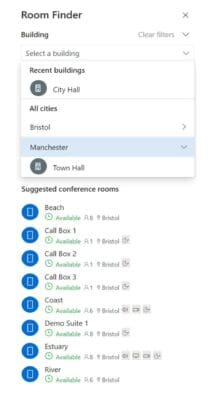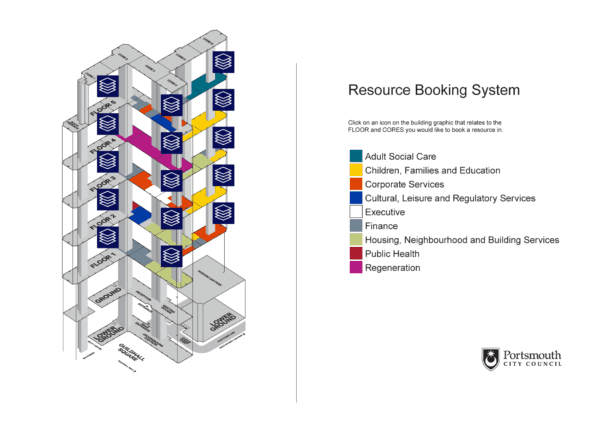Hybrid Working
Hybrid Meetings: The Future of Collaboration and Connectivity
The modern workplace is evolving rapidly, and businesses are increasingly seeking innovative ways to adapt and thrive in the new normal. One such transformation is the rise of hybrid meetings, a meeting format that combines the best of in-person and remote collaboration. Hybrid meetings are quickly becoming the preferred mode of communication for businesses, as they offer increased flexibility, efficiency, and inclusivity. In this article, we will explore the concept of this new breed of meeting type, discuss the solutions required to facilitate them, and provide guidance on running a successful hybrid meeting.
What is a hybrid meeting?
A hybrid meeting, a term that has become increasingly popular in the world of remote work, is a gathering that combines both in-person and remote participants. This innovative meeting format allows for collaboration between people who may be located in different offices, cities, or countries. The essence of a hybrid meeting lies in its flexibility, as it allows participants to engage from various locations using hybrid meeting solutions. As the definition of hybrid meetings continues to evolve, it’s essential to understand how this new format can benefit businesses and employees alike.
Hybrid meeting solutions
Effective hybrid meetings rely on the right technology and tools to bring remote and in-person participants together seamlessly. Hybrid meeting solutions often include hybrid meeting rooms, hybrid meeting teams, and hybrid meeting software. Hybrid meeting rooms are specially designed spaces with advanced audio and video equipment, enabling clear communication between all participants. These spaces are crucial for successful hybrid meetings, as they ensure that both in-person and remote attendees can engage without any technical barriers.
Hybrid meeting teams typically include a combination of in-person and remote employees, who work together to achieve their goals. This mixture of team members promotes a more diverse and inclusive working environment, fostering creativity and collaboration. A hybrid meeting setup also requires the right software to facilitate seamless interaction between remote and in-person attendees. Hybrid meeting software, such as video conferencing platforms, enables real-time communication and collaboration, allowing teams to work together effectively.
How do hybrid meetings work?
At the heart of a successful hybrid meeting is the ability to include all participants, regardless of their location. Inclusive hybrid meetings ensure that both virtual and hybrid meeting attendees can contribute equally. To achieve this, meeting organisers must ensure a hybrid meeting setup that offers a level playing field for all. This involves providing hybrid meeting room solutions, such as high-quality microphones and speakers, as well as hybrid meeting spaces that are conducive to interaction.
Hybrid meetings in the workplace can also include a hybrid meeting system, which may consist of a combination of hardware and software tools designed to facilitate communication. The hybrid meeting definition extends beyond technology, though, as effective hybrid meetings also require thoughtful planning and execution. This includes establishing clear goals, setting meeting agendas, and fostering an inclusive environment where every voice is heard.
A hybrid meeting format may involve a speaker for hybrid meetings, responsible for guiding the conversation and keeping participants engaged. Meeting organisers should also consider incorporating tools such as chat functions, polls, and breakout sessions to promote interaction and collaboration.
How to run a great hybrid meeting
Running a great hybrid meeting involves more than just setting up the right technology. Successful hybrid meetings require careful preparation and attention to detail.
Here are some steps to ensure your hybrid meeting is a success:
- Make your goals clear: Define the purpose and objectives of your hybrid meeting, and outline a clear agenda. Share this information with participants in advance to give them ample time to prepare.
- Ensure inclusivity: Make certain that hybrid meetings meaningfully engage both in-person and remote participants. Encourage everyone to contribute and be mindful of potential obstacles that remote attendees may face.
- Pay attention to accessibility: You should also consider the accessibility needs of all participants, including those with disabilities or who may have trouble participating in a hybrid meeting format. Providing closed captioning, for example, can help ensure that all participants can fully engage in the meeting.
- Foster engagement: Encourage interaction between participants using tools like polls, chat functions, and breakout sessions. These features can help break the ice and create a more dynamic meeting experience.
- Assign roles: Designate a hybrid meeting speaker or facilitator to guide the conversation and ensure everyone’s input is considered. You may also assign other roles, such as a note-taker or timekeeper, to keep the meeting on track.
- Rehearse: Test your hybrid meeting format and technology before the actual meeting to minimise potential hiccups. For example, if you plan to use Teams breakout rooms, this is worth testing out in advance.
- Follow up: After the meeting, gather feedback and analyse the effectiveness of your hybrid meetings workshop.
How to organise a hybrid meeting
Setting up a hybrid meeting involves organising lots of elements.
Arguably, setting up the ‘physical‘ aspects of your requirements can be more challenging than setting up the remote meeting technology.
For example, finding and then booking the right sized meeting room along with the appropriate AV facilities can involve many phone calls and email exchanges with the facilities team.
If you are new to running hybrid meetings, you may also want to ensure a technician is on hand in the event of any challenges in connecting your laptop to screen displays, using smart boards and so on.

Here are some ways in which you can streamline the process of setting up hybrid meeting:
- Have a meeting room finder facility: To set up a successful hybrid meeting, you’ll want to locate an available meeting room (and perhaps breakout rooms) with the necessary seating capacity* and AV equipment. Microsoft 365, for example, allows you to create attributes that describe your available workspaces, and check their availability as part of the Outlook meeting invitation process.
- Schedule your meeting and other resources together: Ideally you should be able to use your default calendaring system to generate invitations for all attendees that include remote joining instructions. It’s especially convenient if you can book the required physical facilities at the same time. This again, is possible using Microsoft 365. There are also third-party solutions available for Outlook or Teams that make it easy to book additional resources like catering or parking spaces.
- Know how people will attend*: Knowing if someone will attend a hybrid meeting remotely or in person is an important part of setting up a hybrid meeting because it massively affects the logistics. Why organise a meeting room for 30 when only 10 plan to attend in person? The meeting invitation process should therefore enable the ability to RSVP specifying whether they will be attending in person or remotely.
- Stay flexible with your logistics: As you receive meeting acceptances, be prepared to adjust your physical space and catering plans to avoid waste, and make sure your facilities team is kept ‘in the loop’. In some cases, everyone may opt to attend remotely, rendering the ‘hybrid’ aspect of your meeting unnecessary. In either case it is handy if you can easily cancel or revise any meeting rooms and any other resources you have booked.
Conclusion
In conclusion, hybrid meetings are revolutionising the way businesses collaborate, offering unprecedented flexibility and inclusivity. By understanding the concept of a hybrid meeting and investing in the right solutions, companies can create a more connected and productive work environment.
Embracing the hybrid meeting format is a step towards a more efficient, inclusive, and future-proof workplace.
Workspace & resource booking solutions
Re-imagine your hybrid workplace with us!

















